The Tigers of the moth world
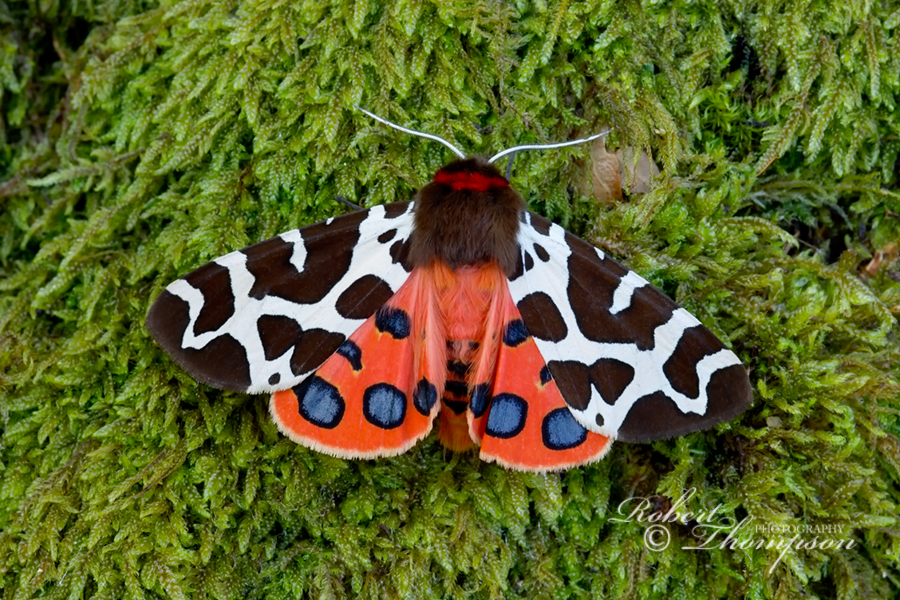
Garden Tiger Arctia caja
Adult moth in typical threat posture revealing the bright orange-red hindwings and the red strip on the top of the thorax.
Nikon D2X, 105mm micro nikkor @ F/16 ISO 100, tripod.
The Arctiinae are a large and diverse group of moth’s with approximately 11,000 species found in many regions throughout the world. The most widely known are the Tiger Moths; famous for their bright, warning colouration and striking wing patterns. Many of the caterpillars in this group are quite hairy and are often referred to as ‘woolly bears’ which are commonly found during the day basking on low growing plants or wandering about on bare ground.
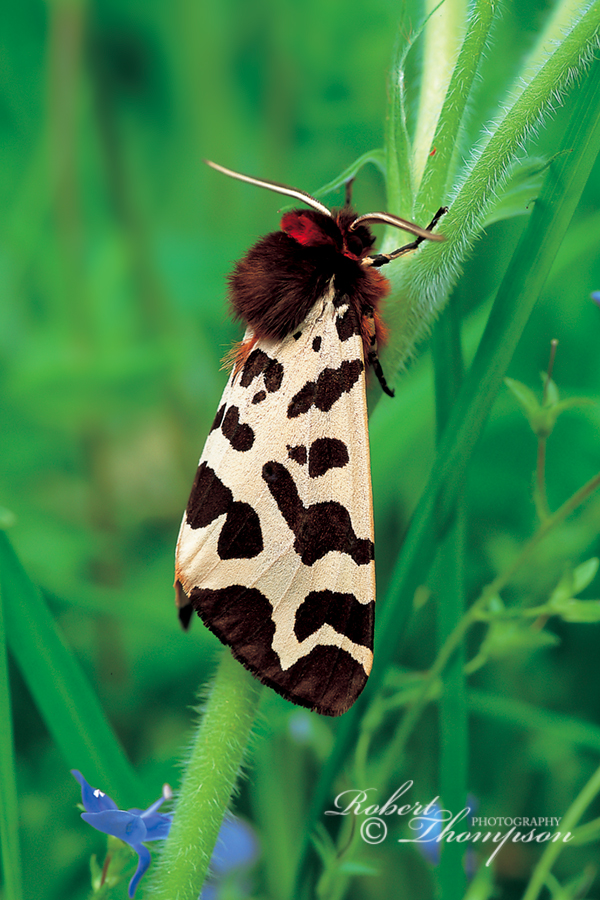 Garden Tiger Arctia caja
Garden Tiger Arctia caja
The chocolate-coloured markings on the forewings can vary among adults some having considerably more white than others.
Mamiya 645 Pro 120mm macro @ F/11 Fuji Velvia, tripod.
Species in this group have what is termed asposematic colouration. Their bright colours and patterns serve to remind potential predators that they contain harmful toxins acquired from the foodplants during the larval phase in their life cycle which the adult moths also possess. The hairs are known to be irritant especially for those with sensitive skin.
The Garden Tiger Arctia caja is perhaps the most widely known species in this group. As a child, it was one of the first moth’s I encountered. I can recall many years ago finding a pristine adult resting on the outside wall of my home which was situated in a large parkland estate.
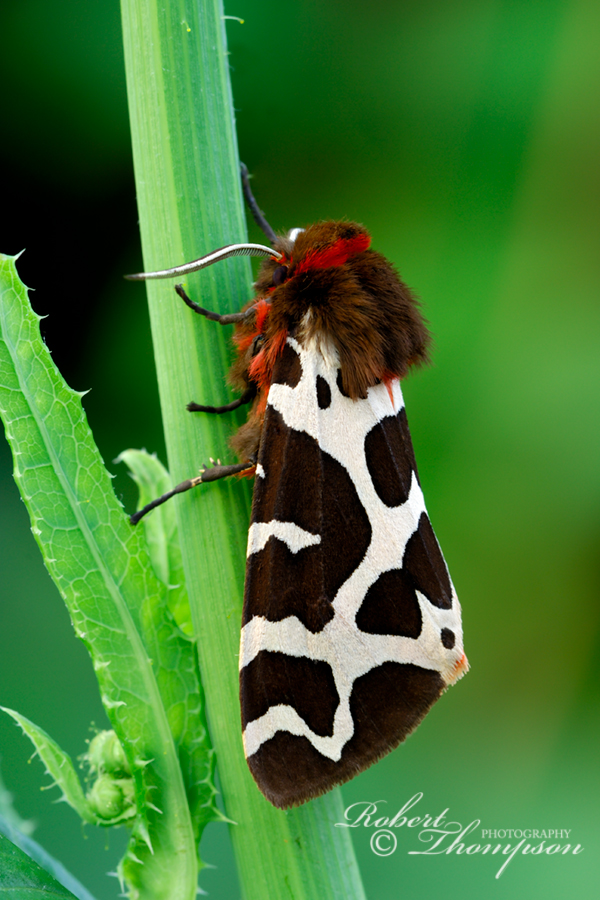
Garden Tiger Arctia caja
Although the caterpillars are frequently found during the day. Adult moths are a lot more secretive and not often seen during the daytime.
Nikon D2X, 200mm micro nikkor @ F/11 ISO 100, tripod.
The Garden Tiger has a northern distribution and occurs throughout Europe, the United States and Canada where it is known as the Great Tiger Moth Arctia caja americana. It is similar to the Garden Tiger but has less white on the forewings and paler orange hindwings. It is essentially a temperate species, preferring a cold, seasonal climate as the larvae overwinter occasionally feeding during milder periods.
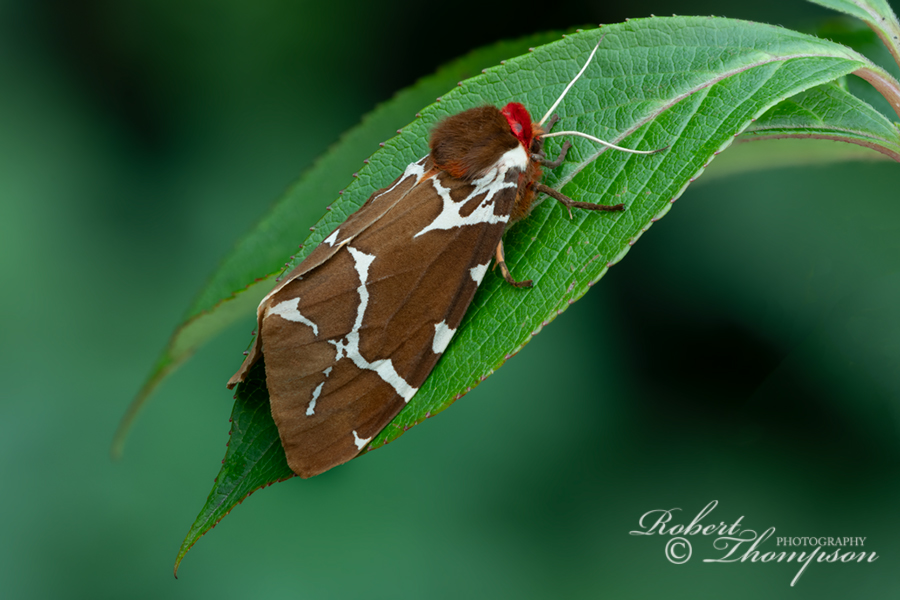
Great Tiger Moth Arctia caja americana
The Great Tiger Moth is predominantly a rich chocolate brown with fewer patches of white on the forewing.
Nikon D850, 200mm micro nikkor @ F/11 ISO 200, tripod.
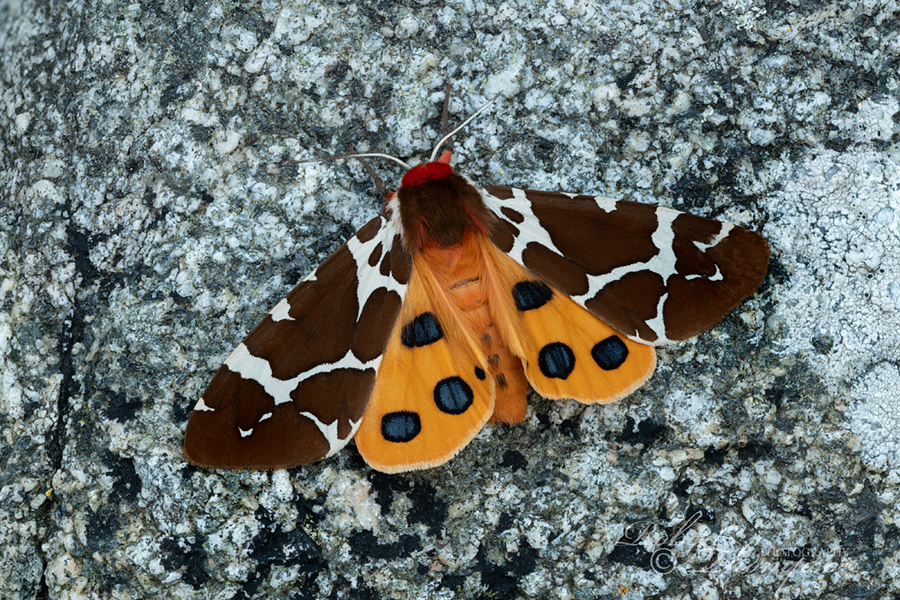
Great Tiger Moth Arctia caja americana
The abdomen and hindwings are pale orange in this species.
Nikon D850, 105mm micro nikkor @ F/8 ISO 200, tripod.
The Moths are on the wing during July and August and can be found in coastal dune systems, woodland margins, meadows and gardens. Adults rest with their forewings covering the bright-coloured hindwings. When threatened or alarmed, they reveal their reddish-orange hindwings with dark spotting to thwart a would-be predator.
The Garden Tiger was once a common and widespread species throughout much of Great Britain. However, in recent times it has decreased significantly throughout much of its range since the 1980s. There are different reasons as to why this might be, but the spraying and general decline of weedy habitats and tidiness of hedgerows are considered a significant factor in its decline.
Other notable species in this group that occur in the British Isles include the Wood Tiger Parasemia plantaginis, Scarlet Tiger Callimorpha dominula and Jersey Tiger Euplagia quadripunctaria.
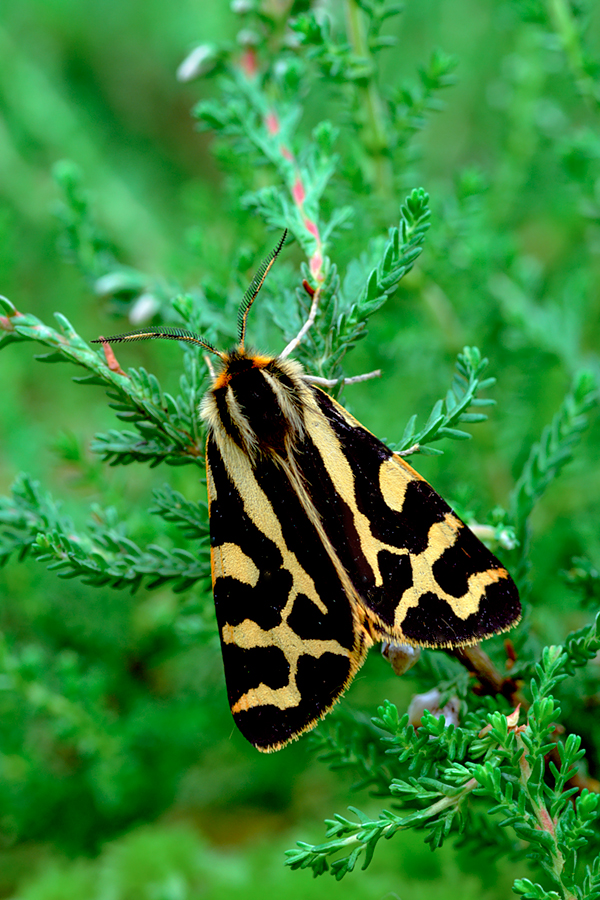
Wood Tiger Parasemia plantaginis
A small but colourful day-flying species found coastal heaths, bogs and acid grassland.
Mamiya 645 Pro 120mm macro @ F/11 Fuji Velvia, tripod.
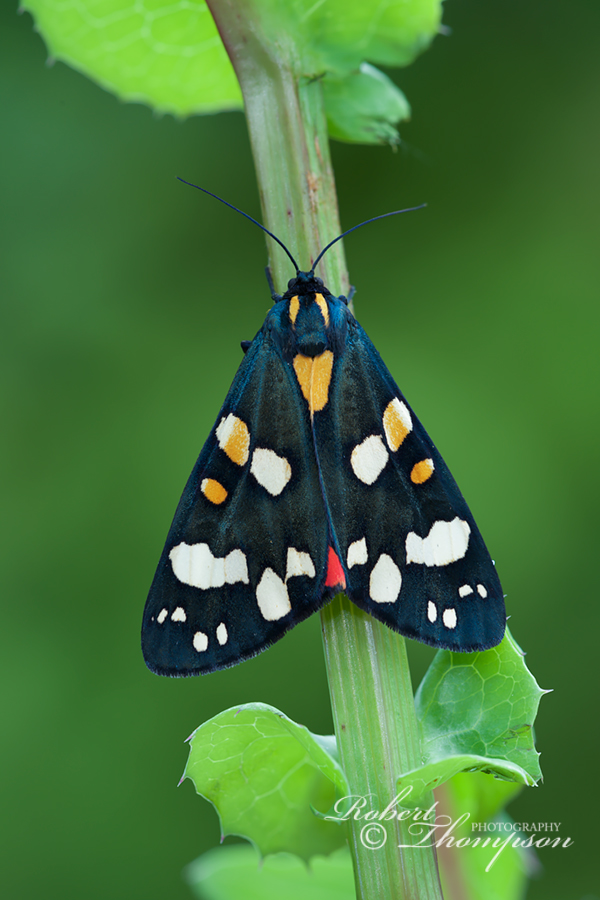
Scarlet Tiger Callimorpha dominula
A richly marked species with bi-coloured spotting on the forewings. Moths conceal the scarlet red underwings when at rest.
Nikon D850, 200mm micro nikkor @ F/11 ISO 200, tripod.
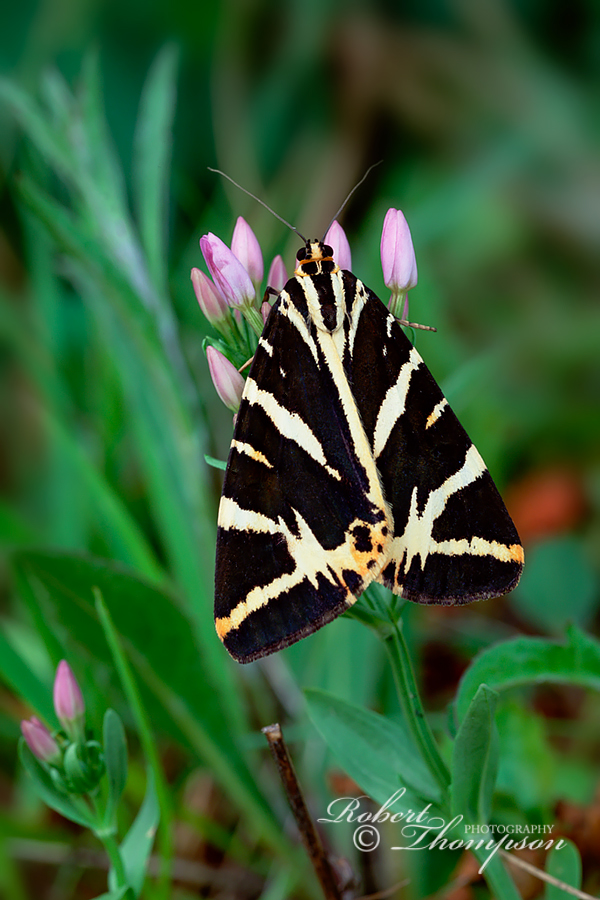
Jersey Tiger Euplagia quadripunctata
A colourful day-flying species found in gardens, coastal cliffs and hedgerows. The larvae feed on a wide variety of plants including, common nettle, hemp-agrimony, borage and plantains. Adults are also attracted to light and also visit various flowers including buddleia.

